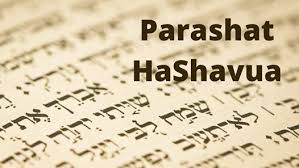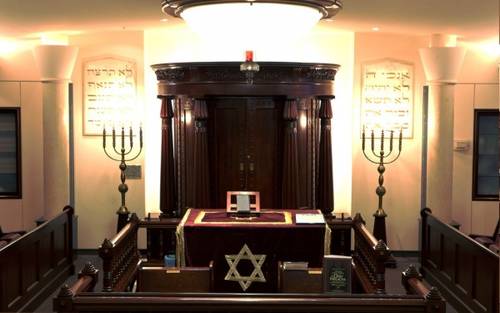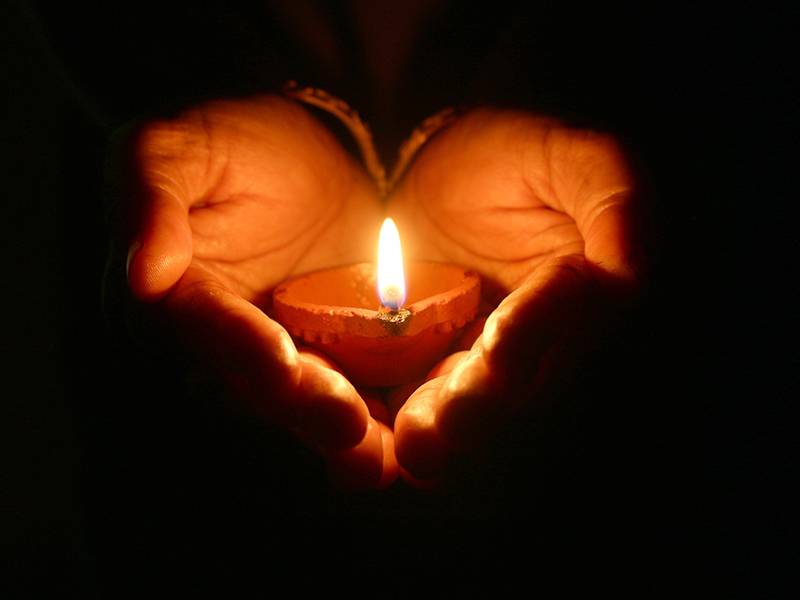Bonjour / Hello [nickname_else_first_name],

Table of contents
1) Perashat Hashavoua - Rabbi Eli Mansour
2) Halakhat Hashavoua (Halakhot related to day to day life) By Hazzan David Azerad -
Scheduling the Se’uda when Purim is on Friday-Peninei Halacha
3) Holy Jokes!
4) For KIDS

This Week's Parasha Insight with Rabbi Eli Mansour
Parashat Ki Tissa- Enabling Our Misvot to Ascend
Parashat Ki-Tisa begins with the Misva of Mahasit Ha’shekel – the half-shekel donation that each member of the nation was obligated to give towards the Bet Ha’mikdash. The Torah teaches that this Misva served "Le’chaper Al Nafshotechem" – "to atone for your souls." For what exactly does the Mahasit Ha’shekel atone?
The word "Shekel" consists of the letters "Shin," "Kof" and "Lamed." The word "Shin" has the numerical value of 360; "Kof" equals 186; and "Lamed" amounts to 74. In total, then, the word "Shekel" represents the number 620 – the total number of Misvot that we are commanded to perform. The Torah commands us to perform 613 Misvot, and the Rabbis enacted seven additional obligations, for a total of 620. It has thus been suggested that the Misva of Mahasit Ha’shekel serves to atone for "half" of the Misvot which we neglect. There are two basic aspects of Misvot: the act, and the Kavana (intention and emotion). The prophet Yeshayahu (29:13) strongly condemns those who serve Hashem in a manner of "Misvat Anashim Melumada" – by rote, going through the motions, without applying the mind and the heart. And the Zohar comments that the thought and feelings invested in a Misva are what enable the Misva to rise to the heavens. Misvot performed without intention are compared to a bird without wings, which cannot fly, and to a body without a soul, which cannot function. And so the Torah commands giving a half-shekel – representing the half of the Misvot which we so often neglect, the concentration and feeling that ought to accompany our Misva observance, but normally does not. We are to give a half-shekel to atone for the half of the Misvot that we fail to properly observe.
For this reason, G-d introduces this Misva by telling Moshe, "Ki Tisa Et Rosh Beneh Yisrael" (literally, "When you count the heads of the Israelites"). The Mahasit Ha’shekel serves to raise ("Tisa") the "Rosh" ("head"), atoning for our lack of thought when we observe Misvot. And later, the Torah says, "Mahasit Ha’shekel Teruma Le’Hashem" ("The half-shekel as a gift to G-d"). The Mahasit Ha’shekel achieves the goal of "Teruma Le’Hashem" – elevating our Misvot to Hashem. It atones for the absence of thought and emotion in our Misva observance, so that the Misvot will be able to rise and reach G-d in the heavens.
The word "Yisrael," the name by which our nation is called, has the same letters as "Li Rosh" – "I have a head." Our goal as Am Yisrael is not merely to perform the Misvot, but to do so with our "Rosh," with our minds, investing thought and feelings into each and every Misva we perform. We are to serve Hashem not just through actions, but also with our minds and our hearts, concentrating intently on the Misvot. The more thought and emotional energy we put into every Misva, the greater its impact will be, as it will soar to the heavens and yield great rewards for ourselves, our families, our community and the entire Jewish Nation, Amen.

Halachot this week are selected and Translated by Hazzan David Azerad
Scheduling the Se’uda when Purim is on Friday
When Purim falls out on Friday, it is customary, le-khatĥila, to begin the meal before the afternoon, in honor of Shabbat. One who could not begin the meal before the afternoon should try to begin the meal at least three hours before shki’a. Be-di’avad, however, one may begin eating any time before shki’a. Either way, if one begins the meal close to Shabbat, he should try to limit what he eats to eat the Friday night meal with a good appetite.
Alternatively, combining the Purim meal with the first Shabbat meal on Friday night is a custom. Some great Torah authorities follow this custom, while others recommend doing so only be-di’avad. To follow this custom, one must pray Minĥa and then begin the meal while it is still Purim. Then, around a half-hour before shki’a, one should accept Shabbat by lighting the Shabbat candles, placing a covering over the bread, and reciting kiddush over wine. Since one has already recited the berakha over wine (Ha-gafen) during the Purim meal, one should omit that berakha in kiddush. After kiddush, one continues the meal, making sure to eat a keveitza of bread, or at least a kezayit, for the Shabbat meal. At the end of the meal, one recites Retzei Ve-haĥalitzenu in Birkat Ha-mazon, adding Al Ha-nisim in the Ha-Raĥaman (“May the Merciful One”) section at the end of the prayer. After the meal, one prays Ma’ariv.
Bevikat Shabbat Shalom umevorach
Purim Sameach
David Azerad
3) HOLY JoKeS!!
Selection of funny snippets, loosely related to this weeks parashah or current events, to brighten your day



4) FOR KIDS
Click on the image to open the youtube video








 MABROOK!!!
MABROOK!!!






